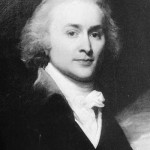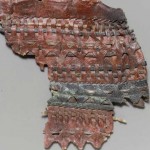 Two hundred years ago last Wednesday, John Quincy Adams set out as the first ambassador from the United States to Russia, appointed by James President Madison. He kept a detailed journal of the trip, but also kept a separate diary that described each day in one line.
Two hundred years ago last Wednesday, John Quincy Adams set out as the first ambassador from the United States to Russia, appointed by James President Madison. He kept a detailed journal of the trip, but also kept a separate diary that described each day in one line.
Now the Massachusetts Historical Society is using John Quincy Adams’ daily summations to class up Twitter. You too can follow his voyage of one-liners exactly 200 years after they happened.
Since part of his 140 characters are dedicated to his current longitude and latitude, you can even follow along on Google Maps as he moves. The nice people at the MHS courteously provide a link and everything.
Interesting highlights for me:
1. he loves him some Plutarch,
2. passing other ships seems to have been a regular, sometimes daily, occurence,
3. John Quincy Adams would totally be a Weather Channel junkie if he were with us today.
You can also read his full diary entries on the MHS website. They have a complete digital archive of the scanned pages. It’s a bit of a challenge to navigate and read, so you might want to start here.
Adams ambassadorship was an eventful one. He was on the job when Napoleon made the damn fool decision to invade Russia He stayed until 1814, when he was recalled to negotiate the Treaty of Ghent, ending the war with Britain that had seen the burning of the White House.
